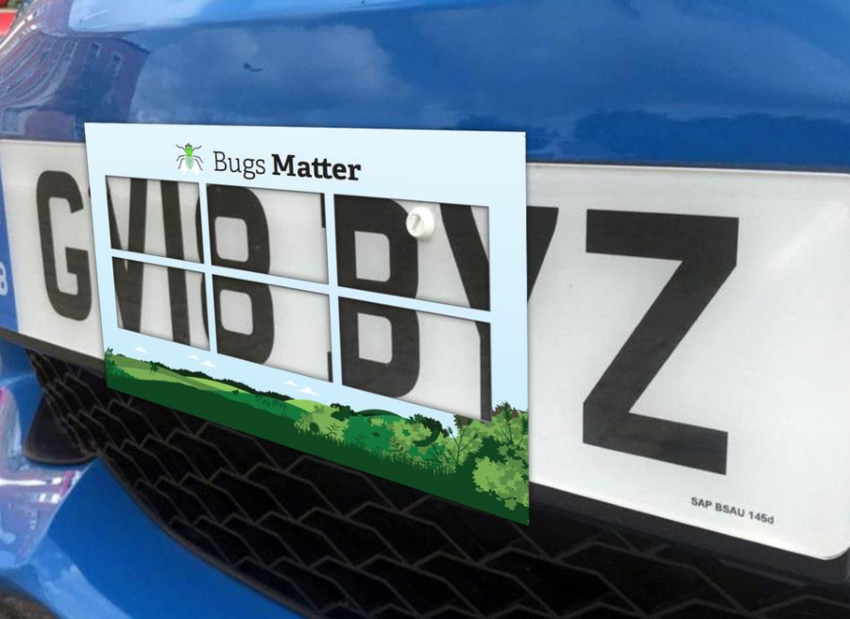How to Measure the Bug Population (Without Even Trying)
For the past few decades, humankind has taken it upon ourselves to better protect the world around us. Whether those efforts are adequate or successful is a topic for a different newsletter, but one thing is for sure: we’ve gotten better at counting. Conservationists regularly keep tabs on the number of endangered species — a rather easy thing to do, given how few there are of those creatures — but researchers don’t stop there. We have methods for estimating the number of common animals, like deer in the United States, or even the number of trees in a given forest. And in some extreme and weird cases, you can try to count the number of common animals by hand; for example, in 2019, a group of 323 volunteers tried to count the number of squirrels in New York’s Central Park. (They claimed there are 2,373 squirrels.) It’s tedious and not wholly accurate, but it’s good enough, right?
But when it comes to insects, counting is tricky. They’re small — hard to see and impossible to differentiate with the naked eye. And many can fly, and regardless, they’re not apt to stay still so you can count them. And you can’t use any tools like agar to attract the bugs; that will throw off your data set. If you’re going to get an approximation of the insect population, you need a way to generate a data sample without incentivizing the insects to come to where you’re counting.
The solution? Cars.
In 2003, the UK’s Royal Society for the Protection of Birds (RSPB) was concerned not with bugs but with birds, as the organization’s name suggests. Specifically,per the BBC, the RSBP noted that “species like tree sparrows and corn bunting [were] on the decline” and wanted to reverse that trend. To do so, they needed to figure out the cause of the problem, and food was one of the first things that came to mind. Those birds feasted on “bees, ladybugs, moths, and other insects,” per the BBC, and the RSPB wondered if those insect populations — and therefore the birds’ food supply — were also dwindling.
To measure the bug population, the RSPB developed something called the “splatometer” — a clear, postcard-sized piece of plastic placed over the license plates (“registration plates” in the UK) of drivers who volunteered to assist with the effort, as seen below (via ResearchGate).

The idea was simple: drivers would drive around like they normally do, and as directed by the researchers who were measuring the insect population, would occasionally send their splatometer in for testing. The researchers would analyze the splatometers to determine how many insects lost their lives in collisions with cars, breaking it down by species. (Apparently, you can determine a lot about a bug by the splat it leaves behind.) Run this experiment over a few years, and you can start to measure the trend in the insect population, or so the theory went.
The theory was right — and the results? They weren’t great, if you’re a bug or one that relies on them as a food source. According to the Guardian, a study from the UK county of Kent compared bug splats from 2004 versus those in 2019, and the dropoff was significant: — there were “50% fewer impacts [in 2019] than in 2004.” And, per the Guardian, modern car designs were part of the problem: “The research included vintage cars up to 70 years old to see if their less aerodynamic shape meant they killed more bugs, but it found that modern cars actually hit slightly more insects.”
The immediate takeaway was that the insect population has been dropping, and quickly. But there could be other explanations. Vintage cars may not be the right way to see if modern cars are just better at avoiding bugs. There are more cars on the road than before, so the bugs-per-car number should go down. On average, drivers drive more miles now than they did even 15 years ago. And we spend more time driving in more urban areas than previously, and if the car in front of you caused a bug splat, that bug is no longer around to splat you. So maybe there’s another cause?
Not likely. In 2022, the Washington Post’s Department of Data dug into each of these potential explanations and came up empty. The paper’s not-so-great conclusion? “Simple math hints that the very real ecological disaster of the collapse of insect populations may look even more apocalyptic thanks to the parallel rise of another ecological time bomb: the world’s intensifying love affair with ever more and ever bigger automobiles.”
Today’s Bonus fact: Many insects are pests, and — despite the main story above — we want to control their populations. One of those pests is the screw-worm fly, a bug whose larva feasted on the flesh of livestock, killing millions of cows and other animals. The screwworm population, today, is under control, through something called the “sterile insect technique.” Male flies are clinically sterilized and then released into the region where their natural populations are causing ecological harm. As Wikipedia’s editors explain, “The sterile males compete with fertile males to mate with the females. Females that mate with a sterile male produce no offspring, thus reducing the next generation’s population.” And there’s virtually no risk of these efforts spreading to other populations of the flies: “Sterile insects are not self-replicating and, therefore, cannot become established in the environment.”
From the Archives: Bugs on a Pyramid: The place where bugs live, unexpectedly.
